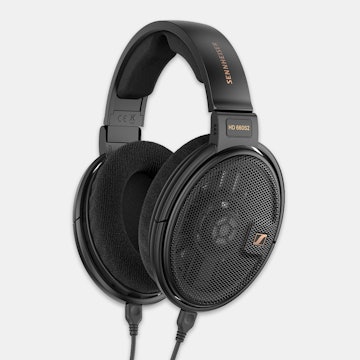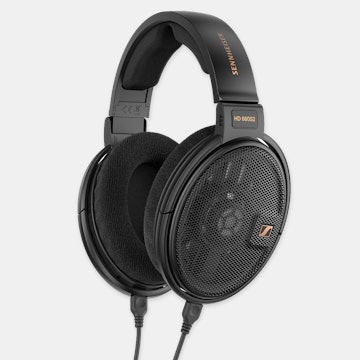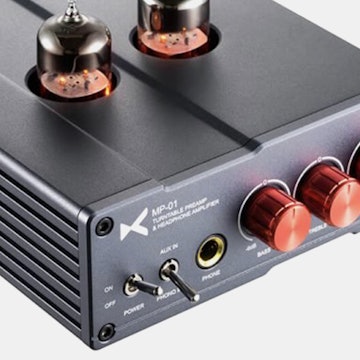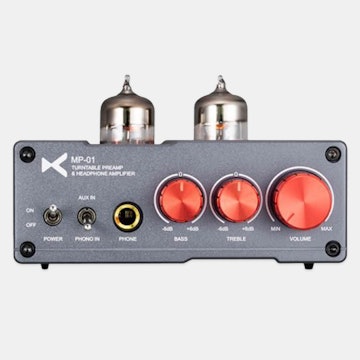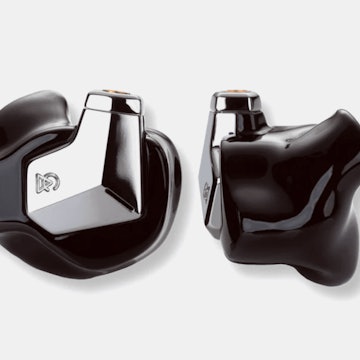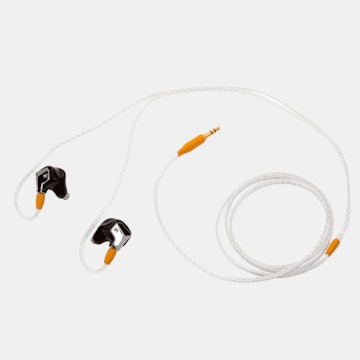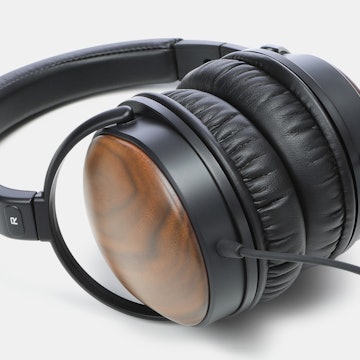Click to view our Accessibility Statement or contact us with accessibility-related questions































Showing 1 of 182 conversations about:
Niro
36
Aug 2, 2017
bookmark_border
Top tip, and those who don't believe in USB cables can tune out right now, but the cable really makes a huge difference with this amp. I used the bundled cable for months, thinking that a short cable should have minimal impact. So wrong. Even a Monoprice cable was a huge upgrade from the bundled cable. It's because of this amp that I started letting go of my cable skepticism. Curious Cable makes what is by far, in my opinion, the best USB cable to go along with this amp. The difference in sound is immediately noticeable, even to those who aren't quite well versed on matters like these. "Holographic" is the word I'd use to describe the sound of this amp when paired with a Curious Cable.
illram
24
Aug 2, 2017
bookmark_border
NiroIf someone could explain to me how a digital cable, transmitting 1s and 0s, can sound different versus some other cable transmitting the exact same 1s and 0s, I'd love to hear it. Because my understanding has always been that with a digital cable like a USB cable, it either transmits the data or it does not. It works, or it doesn't. There is no magic that happens along the way with the data.
LinkOmega
77
Aug 3, 2017
bookmark_border
illramHaha. I've heard this argument so many times. I worked in IT (networking) for 11 years. And I thought the same. The truth is, digital is still susceptible to noise. Why do you think shielded cat5 exists? And why twisted pair came along on Ethernet cables? It was all to deal with noise. Why does an on-board sound card sound awful. 1 reason is emi from the other components. That's why they've started shielding them. Just do some research. It's not hard to find real answers
Niro
36
Aug 3, 2017
bookmark_border
illramVery simple, actually. For your standard data transfers, the cable doesn't really matter because error correction will guarantee that your data gets from one place to the other as it should. These would be your standard "control transfers", "interrupt transfers" and "bulk transfers". However, when using a DAC, you're using an "isochronous transfer". This particular transfer method sends the audio data in real time at a guaranteed fixed rate but is not subject to error correction (regardless of the integrity of the previous data, the following data will always come through) and more importantly, the data will be subject to timing jitters - and this is the thing that virtually all audio companies trying to pawn their snake oil products talk about - timing jitter. The crazy thing is, you can actually hear the difference. But don't take my word for it, if you have a Mojo, try using the cable that was bundled with it, and then switch to a Monoprice cable (or I suppose any other decent cable you might have on hand, but perhaps under a metre long) - if you don't hear any difference, then perhaps it's not worth pursuing any further. I only went down the road of spending big bucks on the Curious Cable after checking to see if anyone else shared this rather controversial experience (I myself never believed it) and through all the mockery and armchair scientist posts out there on the wild wild Web, I read some really positive experiences with the Curious Cable and man, I don't regret it for a second. I simply cannot use any other cable anymore and believe me, I've tried.
The Curious Cable is unfortunately very sensitive - the thickness of the cable and the fact that it's handmade means that if you shove the cable during use, it will disconnect and reconnect the Mojo, interrupting the audio. Not wanting to spend more money on exotic cables, I purchased a $60 Audioquest Cinnamon cable. This too had a noticeably different sound signature from your standard USB cable, but it was not one I particularly enjoyed. So I gave that cable away to another friend I had introduced to the world of DACs, and she too immediately recognised the difference when she paired the Audioquest with the FiiO E18. I figured that what must be making the difference here is the amount of silver content in the cable - after all, Audioquest differentiates their cables by the percentage of silver in them, and silver is a better conductor than the usual copper (again, this is all empirical evidence, utterly anecdotal and your mileage may vary - although silver IS a better conductor). My final purchase was a Pangea AG cable that I picked up for about $30 on Amazon. Sturdy cable, short, and as luck would have it, an agreeable sound signature. I used it for 6 months daily, then decided to pull out the Curious Cable again to see if I was hallucinating the difference, and holy shit, I was not - it sounds absolutely incredible, like the sound stage is well outside of my headphones (B&W P7).
Today, I've switched back to the Curious Cable permanently - even the occasional disconnect is worth putting up with. The thing is, out of all the exotic cables out there, it's actually relatively affordable (given that you're buying a Mojo, this is not too much to take a chance on), and there's really no way I can justify dumping $500+ on cables for a portable device, at least. Nevertheless, I embarked on this journey after accidentally plugging in a humble Monoprice cable instead of the bundled one to the audio port. I do wish there was more scientific data to explain why such a difference can occur (and trust me, with the Curious Cable, the difference is inexplicably dramatic compared to the Monoprice, Pangea and Audioquest cables), but I wouldn't have the faintest idea on how I could even conduct a scientific test. All I can say is that just like the Chord Mojo sounds dramatically different from standard DACs (this too comes down to the fact that the FPGA processor has insanely more processing power, precision and speed than your average DAC chip), I now believe the cable too can play a role in altering the sound of your media.
The Curious Cable is unfortunately very sensitive - the thickness of the cable and the fact that it's handmade means that if you shove the cable during use, it will disconnect and reconnect the Mojo, interrupting the audio. Not wanting to spend more money on exotic cables, I purchased a $60 Audioquest Cinnamon cable. This too had a noticeably different sound signature from your standard USB cable, but it was not one I particularly enjoyed. So I gave that cable away to another friend I had introduced to the world of DACs, and she too immediately recognised the difference when she paired the Audioquest with the FiiO E18. I figured that what must be making the difference here is the amount of silver content in the cable - after all, Audioquest differentiates their cables by the percentage of silver in them, and silver is a better conductor than the usual copper (again, this is all empirical evidence, utterly anecdotal and your mileage may vary - although silver IS a better conductor). My final purchase was a Pangea AG cable that I picked up for about $30 on Amazon. Sturdy cable, short, and as luck would have it, an agreeable sound signature. I used it for 6 months daily, then decided to pull out the Curious Cable again to see if I was hallucinating the difference, and holy shit, I was not - it sounds absolutely incredible, like the sound stage is well outside of my headphones (B&W P7).
Today, I've switched back to the Curious Cable permanently - even the occasional disconnect is worth putting up with. The thing is, out of all the exotic cables out there, it's actually relatively affordable (given that you're buying a Mojo, this is not too much to take a chance on), and there's really no way I can justify dumping $500+ on cables for a portable device, at least. Nevertheless, I embarked on this journey after accidentally plugging in a humble Monoprice cable instead of the bundled one to the audio port. I do wish there was more scientific data to explain why such a difference can occur (and trust me, with the Curious Cable, the difference is inexplicably dramatic compared to the Monoprice, Pangea and Audioquest cables), but I wouldn't have the faintest idea on how I could even conduct a scientific test. All I can say is that just like the Chord Mojo sounds dramatically different from standard DACs (this too comes down to the fact that the FPGA processor has insanely more processing power, precision and speed than your average DAC chip), I now believe the cable too can play a role in altering the sound of your media.
Niro
36
Aug 3, 2017
bookmark_border
NiroFurther to my post, Rob Watts, creator of the algorithms and tech behind Chord's products has gone on to state that out of all the inputs on the Mojo/Hugo, the optical input is his preferred choice for minimising noise and interference. I do not have a source with an optical output to try this out, unfortunately.
bennysachdev
12
Aug 3, 2017
bookmark_border
NiroDo you use the Curious usb cable to connect to the data or power port on the chord mojo?
Niro
36
Aug 3, 2017
bookmark_border
bennysachdevThe data port. I don't think the power port should make any difference. Also note that the Mojo is designed with the data and power ports kept separately for a good reason - to minimise noise and interference.
bennysachdev
12
Aug 3, 2017
bookmark_border
NiroYes that's true the power and data port are different. Which is why I'm skeptical that adding an expensive data cable will affect the sound quality. Is there a cheaper alternative to the curious cable? Maybe something between the stock cable and a 160$ USB?

Jackula
1746
Aug 3, 2017
bookmark_border
NiroWouldn't it be cheaper just to use WASAPI (event) - assuming your DAC can support this properly, then you don't have to worry about the timing of packets going through the cable. Most DACs I know won't support WASAPI (event), sure you'll still get audio through them but does nothing for jitters, ones that do tend to cost a lot more... guess I just answered my own question ha! :)
What annoys me the most when using USB cables is the noisy current that gets transferred from your PC to your DAC through your cable, but it's easily solved by removing the power wire from the cable.
What annoys me the most when using USB cables is the noisy current that gets transferred from your PC to your DAC through your cable, but it's easily solved by removing the power wire from the cable.
illram
24
Aug 3, 2017
bookmark_border
LinkOmegaI'm talking about the snake-oily "this cable sounds better than this cable" stuff. Yes, poor setups or powerful interference can introduce things like pops, hiss, crackling, intermittent cutouts. Data loss or corruption. Very immediately obvious things. And: not necessarily the fault of the USB cable either. But one USB cable over another isn't going to, say, improve a soundstage, or make the bass deeper, or make you more easily hear Don Henley's inhale on Hotel California... that is hocus pocus.
The jitter stuff is a little above my paygrade, but I'm highly skeptical anyone can hear the difference, and also, from reading about it this seems to be an issue with the hardware sending it and/or the hardware receiving it, not the cable in between.
The jitter stuff is a little above my paygrade, but I'm highly skeptical anyone can hear the difference, and also, from reading about it this seems to be an issue with the hardware sending it and/or the hardware receiving it, not the cable in between.

Jackula
1746
Aug 3, 2017
bookmark_border
illramI can tell, but it's hard. I mean I can't tell when I have nothing to compare against. For example, on my DAC there's a switch. When coming from USB it's < 2ps. When coming from SPDIF it's jittery. I can flip the switch at will, and when I do I hear a clear difference. The USB is better, the jittery SPDIF just annoys me.
But give me a long break, then put me on SPDIF first go, it will be hard to hear anything that's "off". Even when I switch to USB I might not hear much difference. But when I've been listening to USB for an extended period, then switch to SPDIF, it will sound rubbish.
These days I prefer to just leave it on USB, not that I can hear the difference, but because I know it's better. Psycho-acoustics is a powerful thing.
But give me a long break, then put me on SPDIF first go, it will be hard to hear anything that's "off". Even when I switch to USB I might not hear much difference. But when I've been listening to USB for an extended period, then switch to SPDIF, it will sound rubbish.
These days I prefer to just leave it on USB, not that I can hear the difference, but because I know it's better. Psycho-acoustics is a powerful thing.
Niro
36
Aug 3, 2017
bookmark_border
bennysachdevAs a primer, I suggest testing if you can hear a difference with cheaper cables. I'd suggest a short Monoprice USB A - USB Micro B cable, and the Pangea AG USB A - USB B cable that is available on Amazon (you will have to get an adapter that converts USB B - USB Micro B). In my personal experience, I found the Monoprice cable to deliver punchier but muddier sound (still a massive improvement from the bundled cable). The Pangea AG cable had a very clear sound, nothing particularly outstanding but still better than the Monoprice cable. There's also the Audioquest Forest cable, which I haven't tried, but it's rather affordable (not sure of the silver/copper content, however). I've tried the Cinammon cable, and although there was a clear difference in the sound, I did not find it to be enjoyable. However, I handed it to my friend to see if she could detect a difference with it on her FiiO E18 compared to her standard cable, and she liked it enough to keep it (I never lent her my Curious Cable after that happened!).
Ultimately, your mileage may vary. I don't expect everyone to hear the same way I do, or even enjoy the sound characteristics of certain cables that I do. I will say this - the Curious Cable startled me with how "holographic" the sound appeared to be, but I felt like the bass was lacking, having switched to it after using the Monoprice. Over time, I realised I'm actually hearing the bass in ways I've never observed before - the Monoprice sounded muddy in comparison. Moreover, I find myself not feeling fatigued after listening for hours, whereas I used to stop listening to music after an hour or so prior to the Curious Cable. (I use the Mojo almost 8 hours straight at work, connected to my rubbish low-end Dell work laptop.)
Ultimately, your mileage may vary. I don't expect everyone to hear the same way I do, or even enjoy the sound characteristics of certain cables that I do. I will say this - the Curious Cable startled me with how "holographic" the sound appeared to be, but I felt like the bass was lacking, having switched to it after using the Monoprice. Over time, I realised I'm actually hearing the bass in ways I've never observed before - the Monoprice sounded muddy in comparison. Moreover, I find myself not feeling fatigued after listening for hours, whereas I used to stop listening to music after an hour or so prior to the Curious Cable. (I use the Mojo almost 8 hours straight at work, connected to my rubbish low-end Dell work laptop.)
Niro
36
Aug 3, 2017
bookmark_border
JackulaWASAPI will only dictate how the audio stream flows out of your computer to the DAC - it will bypass the Windows driver, any software filters and upsampling that your computer may perform, allowing the Mojo to do its magic on the raw data. I personally use WASAPI with Foobar2000. The difference is still apparent, perhaps even more so.
Perhaps another way to think of this is that the cable doesn't present the audio as it's meant to be heard, but adds its own signature to the sound - therefore, it would be up to the listener to determine whether the characteristics of a particular cable meets their tastes. As an example, after switching the bundled cable to a Monoprice cable I had lying around, I was in love with how clear and punchy that cable sounded. When I started using the Curious Cable, the Monoprice all of a sudden seemed to be a bit flabby, with muddy bass. I'm quite intrigued by how these cables can impact the sound to various degrees, but not enough to keep investing any further than the Curious Cable.
One might argue that we don't want to listen to audio that's been modified by the cable, that we want to hear the audio in its purest form possible. To that, I say that's probably never going to happen. Hell, if we were to follow the logic that the cable cannot impact the sound because it's just 1s and 0s being passed along, then by what logic do we keep investing in different DACs? If it's just 1s and 0s going into the DAC, then it should come out exactly the way it's supposed to, right? But that isn't the case, and the Mojo is the finest example of what a dramatic difference a DAC can make. Clearly, there's more to this than just the passing along of 1s and 0s - the DAC also plays a role in altering the sound in ways that appeals (or doesn't) to the listener, either by adding pleasing distortion, or eliminating or controlling it. All that is well beyond my scope of understanding, but I don't see anymore why the cable can't also play a role in the grand scheme of things.
Perhaps another way to think of this is that the cable doesn't present the audio as it's meant to be heard, but adds its own signature to the sound - therefore, it would be up to the listener to determine whether the characteristics of a particular cable meets their tastes. As an example, after switching the bundled cable to a Monoprice cable I had lying around, I was in love with how clear and punchy that cable sounded. When I started using the Curious Cable, the Monoprice all of a sudden seemed to be a bit flabby, with muddy bass. I'm quite intrigued by how these cables can impact the sound to various degrees, but not enough to keep investing any further than the Curious Cable.
One might argue that we don't want to listen to audio that's been modified by the cable, that we want to hear the audio in its purest form possible. To that, I say that's probably never going to happen. Hell, if we were to follow the logic that the cable cannot impact the sound because it's just 1s and 0s being passed along, then by what logic do we keep investing in different DACs? If it's just 1s and 0s going into the DAC, then it should come out exactly the way it's supposed to, right? But that isn't the case, and the Mojo is the finest example of what a dramatic difference a DAC can make. Clearly, there's more to this than just the passing along of 1s and 0s - the DAC also plays a role in altering the sound in ways that appeals (or doesn't) to the listener, either by adding pleasing distortion, or eliminating or controlling it. All that is well beyond my scope of understanding, but I don't see anymore why the cable can't also play a role in the grand scheme of things.

Jackula
1746
Aug 3, 2017
bookmark_border
NiroDACs sound different because of filters used, sampling, components that add noise introduced to the circuit, types of capacitors and resistors, the clock, the type of chips used, how many is used, balanced vs unbalanced, whether a tube buffer is used, power supply, length of path between i2s converter and DAC chip, pretty much everything will alter the sound in some way.
And no, cables cannot change 1's and 0's in any way. But current carried through the usb cable can interfere with DAC circuitry and alter the sound. WASAPI let's you control the flow to your DAC, which is the endpoint, so it doesn't matter if they get there slower or faster because your USB to i2s converter would put them in the correct timings using the on-board clock. Or you can purchase a standalone clock that does this, hiface, audiophilleo and off ramp comes to mind.
And no, cables cannot change 1's and 0's in any way. But current carried through the usb cable can interfere with DAC circuitry and alter the sound. WASAPI let's you control the flow to your DAC, which is the endpoint, so it doesn't matter if they get there slower or faster because your USB to i2s converter would put them in the correct timings using the on-board clock. Or you can purchase a standalone clock that does this, hiface, audiophilleo and off ramp comes to mind.
Niro
36
Aug 3, 2017
bookmark_border
JackulaIn a cable, 1s and 0s are represented as voltage fluctuations. The cable doesn't know what a 1 and 0 is to even consider modifying them. However, surely the structure of a cable (I notice that many premium cables separate the data wires from the 5v line) and the materials use to build that cable surely play a small role that end up with some sort of cumulative effect? Either way, I don't believe that the DAC can fix the timings beyond a very limited degree - there were actually threads on DIYHifi.org showing spectral analysis of various amps and cables and whatnot that actually indicated that while theoretically there should be no difference, or based on the manufacturer's claims that jitter would be eliminated, that it was always present in some form or the other (been a while since I've been there, but those threads should still be there).
Reclocking should of course be possible to some degree, but garbage in = garbage out. Combine this with the lack of error correction in isochronous transfer mode, and well... I can only speculate here, I'm no engineer. All I can confirm is that there is a very noticeable difference in the audio with different cables with the Mojo. If you have experimented as I have and concluded otherwise, then perhaps this is down to differences in how we perceive audio or our equipment setup, who knows. But I'm not resorting to armchair science - I thoroughly enjoy the sound I get with the Curious Cable, and encourage anyone to experiment (not just with the Curious Cable) and see how they fare. As a person who formerly dismissed that cables could make any meaningful difference, well, I know better now than to rely on shaky theory and just go with what I enjoy listening to. As always, your mileage may vary.
Reclocking should of course be possible to some degree, but garbage in = garbage out. Combine this with the lack of error correction in isochronous transfer mode, and well... I can only speculate here, I'm no engineer. All I can confirm is that there is a very noticeable difference in the audio with different cables with the Mojo. If you have experimented as I have and concluded otherwise, then perhaps this is down to differences in how we perceive audio or our equipment setup, who knows. But I'm not resorting to armchair science - I thoroughly enjoy the sound I get with the Curious Cable, and encourage anyone to experiment (not just with the Curious Cable) and see how they fare. As a person who formerly dismissed that cables could make any meaningful difference, well, I know better now than to rely on shaky theory and just go with what I enjoy listening to. As always, your mileage may vary.

livingspeedbump
6724
KeyChatter’s Owner and Editor-in-Chief
Aug 3, 2017
bookmark_border
Niroreally curious how the word "holographic" describes anything audio related haha.
smile17
69
Aug 3, 2017
bookmark_border
NiroI have a Chord Mojo, it works fine with a Monoprice cable with ferrite core. I believe the ferrite core makes all the different in the world as far as jitters concern, and I've tested it out with a few of them. No need for a fancy cable, it's a slippery slope. If you ever chop up a Monoprice cable, you'll see that the quality of their connectors, wires and soldered joints are very good. If one wants to get rid of jitters completely, SPDIF is the way to go, but keep it mind that the Mojo can't play DSD with SPDIF connection.

Jackula
1746
Aug 3, 2017
bookmark_border
NiroIt's not as simple as 1's and 0's, when you turn WASAPI on, the USB transfer becomes asynchronous and there is error checking. Many years ago I've read an article that tested dozens of USB cables from $2 to $200, in asynchronous mode they all achieved 100% accuracy. So technically you cannot get garbage in, garbage out, you can only get garbage out, garbage out.
Where a USB *might* improve sound, is where the DAC does not support asynchronous mode transfer. In this case, you can output WASAPI all you want from your PC end, but the DAC will handle it isochronously.
You can never get rid of jitter completely. Even your DAC's clock, or external clock is doing its job, jitter can be introduced by the power supply of your DAC, and the circuitry that runs between the clock and DAC chip.
Where a USB *might* improve sound, is where the DAC does not support asynchronous mode transfer. In this case, you can output WASAPI all you want from your PC end, but the DAC will handle it isochronously.
You can never get rid of jitter completely. Even your DAC's clock, or external clock is doing its job, jitter can be introduced by the power supply of your DAC, and the circuitry that runs between the clock and DAC chip.

Jackula
1746
Aug 3, 2017
bookmark_border
livingspeedbumpUsually describes the soundstage (or the headstage in this context) - width, depth, imaging.
Niro
36
Aug 4, 2017
bookmark_border
livingspeedbumpSimply put, the sound does not appear to be coming from the two drivers on my head. It's actually surprisingly easy to determine the spatial arrangement of various sounds. I listen to a fair bit of trance and instrumental music. With the Curious Cable, the various sounds/instruments seem as if they've been spread out and you can identify what is being played and where. This is my experience, at least. I've really never heard anything quite like it. I've used the cable with the FiiO E18 as well, but it truly complements the Mojo's extraordinary ability to resolve detail at a ludicrous speed.
Niro
36
Aug 4, 2017
bookmark_border
smile17I too use/used a Monoprice cable with a ferrite core. To be honest, I don't know how much of a difference the core plays, as I also purchased a ferrite core from Monoprice and attached it to the other cables I've used with the Mojo, Curious Cable included. I cannot for certain say that I noticed any difference. I also use an Audioquest Jitterbug on the audio cable to my Mojo, but I don't think I hear any difference with or without it either. I just use it because, well, it was bloody expensive, but I wouldn't go so far as to recommend it to people.
Anyway, this whole game is a slippery slope. I deal with people every single day at work who can't comprehend why I bring this setup, instead of just using my phone or laptop directly. If they listen to it, they can't stand it for too long because they deem it to be "too loud". Some people are startled by the clarity of the sound, but not enough to invest any further. By that logic, they also think that all these DACs and headphones are a slippery slope - if you can hear the music just fine, why bother anymore with all this nonsense? It's all just a slippery slope, right? You start experimenting with different DACs and headphones and file formats (why can't you just rip a YouTube MP3? What's a FLAC?) and in the end you hear the same exact song we do! I can't explain to them that while we may be hearing the same song, I'm actually listening to it, experiencing it in a different way with this stuff. And the thing is, they're not wrong - if it works for them, it just does, and vice versa.
Anyway, this whole game is a slippery slope. I deal with people every single day at work who can't comprehend why I bring this setup, instead of just using my phone or laptop directly. If they listen to it, they can't stand it for too long because they deem it to be "too loud". Some people are startled by the clarity of the sound, but not enough to invest any further. By that logic, they also think that all these DACs and headphones are a slippery slope - if you can hear the music just fine, why bother anymore with all this nonsense? It's all just a slippery slope, right? You start experimenting with different DACs and headphones and file formats (why can't you just rip a YouTube MP3? What's a FLAC?) and in the end you hear the same exact song we do! I can't explain to them that while we may be hearing the same song, I'm actually listening to it, experiencing it in a different way with this stuff. And the thing is, they're not wrong - if it works for them, it just does, and vice versa.
Niro
36
Aug 5, 2017
bookmark_border
JackulaI upgraded the WASAPI component in Foobar2000 and then experimented over the course of my workday. Switching back and forth between Event and Pull on the same tracks and tracks that I'm familiar and unfamiliar with did not reveal any differences that were perceptible to me. However, I did notice that the connection to the DAC was a lot more stable, even if the cable was nudged. The DAC would reconnect and continue playing the file instead of interrupting Foobar2000. I will continue using Event mode for this benefit alone.

Jackula
1746
Aug 5, 2017
bookmark_border
NiroThanks for doing the listening tests, glad the event mode has worked out for you. I suspect the curious USB cable isn't doing anything for your jitters directly, but it's just built in a way that carries less electrical interference to your DAC (which indirectly impact jitter and distortion).
... btw, just reading the curious cable website, the way they are designed, the power wire isolated from the data channels. This would be the contributor factor to the superior sound quality as you are hearing with the Curious USB. This is more or less the same suggestion I had a few posts back, that is to strip out the power wire altogether if your DAC allows. In my own listening, stripping out the power wire almost always leads to better sound coming from your headphones.
... btw, just reading the curious cable website, the way they are designed, the power wire isolated from the data channels. This would be the contributor factor to the superior sound quality as you are hearing with the Curious USB. This is more or less the same suggestion I had a few posts back, that is to strip out the power wire altogether if your DAC allows. In my own listening, stripping out the power wire almost always leads to better sound coming from your headphones.
Niro
36
Aug 7, 2017
bookmark_border
JackulaThe Chord Mojo won't work without the power line (even if you're using the audio USB port exclusively) because it needs it to do a "handshake" of some sort. I've heard of cables where you can detach the power line after the handshake is completed, but honestly, I'm quite happy where I am right now. Those can be experiments for a later time.

5uberman
5
Sep 13, 2017
bookmark_border
NiroI have tried optical and USB input. I prefer USB for digitally mastered music, but for classical/analog mastering era/any music with natural instruments, optical is better.
USB has moderate interference when signal is bad on phone, but my mojo had been modified with an RF shield inside, and upgraded capacitors, so YMMV. USB is fed via Onkyo Player with real time DSD conversion to "5.6MHZ High precision", and the roll off, dynamic range and Prat is greatly improved vs stock USB audio. The audio is bit-perfect and thus I consider it an "optimal situation" for feeding USB signal to Mojo. Also works with ASIO via Foobar, which is even better sounding IMHO.
Optical input has a slightly warmer and thicker sound. Roll off is slower and there is no interference.
USB has moderate interference when signal is bad on phone, but my mojo had been modified with an RF shield inside, and upgraded capacitors, so YMMV. USB is fed via Onkyo Player with real time DSD conversion to "5.6MHZ High precision", and the roll off, dynamic range and Prat is greatly improved vs stock USB audio. The audio is bit-perfect and thus I consider it an "optimal situation" for feeding USB signal to Mojo. Also works with ASIO via Foobar, which is even better sounding IMHO.
Optical input has a slightly warmer and thicker sound. Roll off is slower and there is no interference.
bennysachdev
12
Sep 13, 2017
bookmark_border
5ubermanI'm curious, what onkyo player are you using? What cable are you using? How did you mod the mojo or do you have a guide on how to do this?
Niro
36
Sep 13, 2017
bookmark_border
5ubermanI would posit that the sound from the optical port, based on the comments of Rob Watts and a basic understanding of the principles of the SPDIF port, that it represents the true nature of the Mojo sound signature. Everything else is basically tweaked in some way along the signal path and that's really up to the end listener to determine whether they enjoy it not. Wish I had access to an optical output though.

5uberman
5
Sep 13, 2017
bookmark_border
bennysachdev-I use my phone and the Onkyo player app (paid app).
-I use a custom made 9n OCC Silver cable terminated by USB Type C on one end, and Micro USB on the other, cable is about 10cm in length.
-I paid someone to mod the mojo. The modification included "an RF interference plate on top of the PCB, New capacitors which I am not told the exact model of, and a new 3.5mm plug with beryllium contacts). Mods cost about 150USD total.

5uberman
5
Sep 13, 2017
bookmark_border
NiroI am no expert in the way the Mojo operates, and I have also heard about rob watts stating the optical input is his preferred input.
The USB input is arguably a little more "exciting", whilst the optical is "smoother". I can't quantify on the extent of the difference though, but it is noticeable.
I use a pair of Campfire Andromeda with Effect Audio Thor SIlver II+ cable, and also an HD700 with aftermarket Litz copper cable. Extent of difference between both inputs are the same on both headphones, though the HD700 benefit from it much more than the Campfire Andromeda, as the Andromeda is already thick and smooth sounding.
bennysachdev
12
Sep 13, 2017
bookmark_border
5ubermanThank you for the info. I am interested in getting this setup. I have the onkyo player app on my s8+. I'd like to get the able and the mod done.

5uberman
5
Sep 14, 2017
bookmark_border
bennysachdevCable you can buy ready made. Something along the line of type c to micro b cable should work On eBay and Amazon.
Mod is more tricky, as it might void your warranty. I only modded mine after the 1 yr warranty expired. Also not sure if the mod is universally available everywhere. some mods sound better than others, mine was mainly focussed on getting rid of hiss and RF noise,
fkucstick
1
Sep 7, 2020
bookmark_border
JackulaCables can and do change 1's and 0's. Every single digital cable works on the basis of high and low voltage signals (1's and 0's), and every cable comes with it's own tolerance. It's the tolerance which allows error correction, but often errors are outwith the tolerance limits, and a 1 may occasionally be recognized as a 0, and vice versa.





